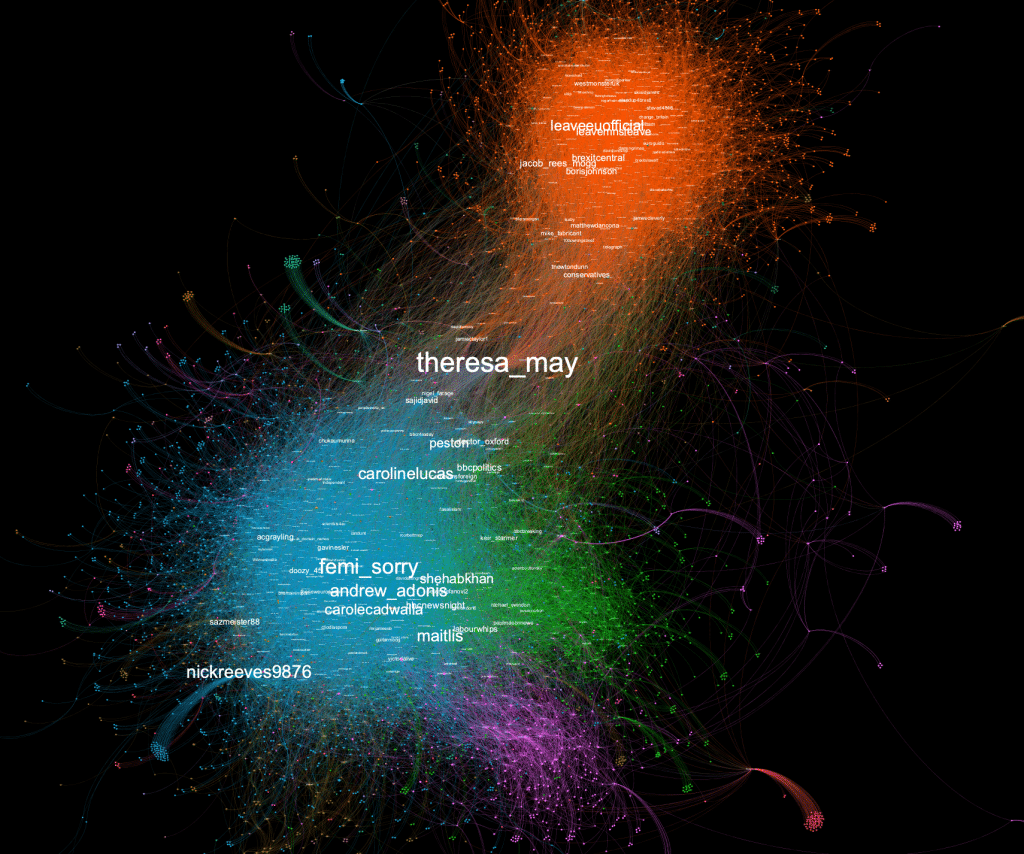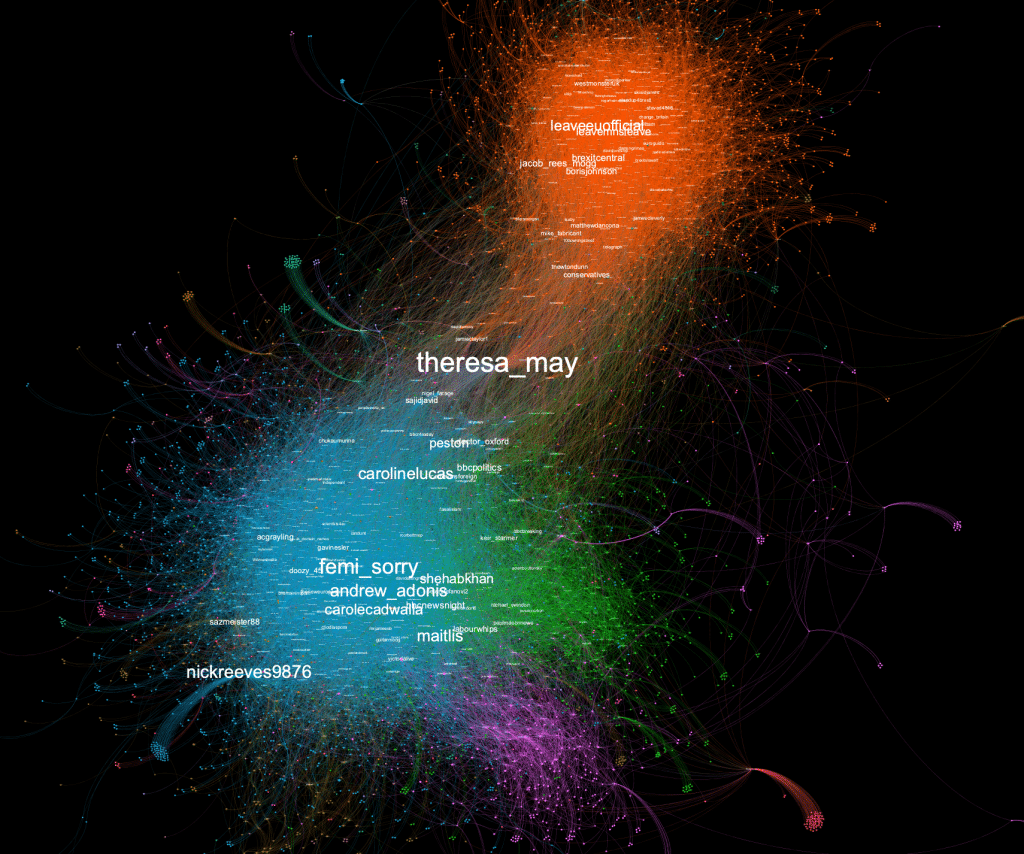Suspicious activity on Twitter is trying to sway public opinion in favor of Brexit as the United Kingdom continues its struggle to reach a deal to withdraw from the European Union, according to a new report.
Researchers at F-Secure’s Artificial Intelligence Center of Excellence led by senior researcher Andy Patel recently observed a flare up in activity related to pro-Brexit accounts on Twitter after analyzing 24 million tweets from 1.65 million accounts.
Due to the degree of activity, researchers believe that those in favor of Brexit are receiving support from far-right Twitter accounts based outside of the United Kingdom. Those accounts seed Twitter with pro-Brexit sentiment. They also inject misinformation supporting the measure, according to a blog post about the research by F-Secure’s Jason Sattler.
The analysis was revealed on the same day that British lawmakers rejected U.K. Prime Minister Theresa May’s second proposed Brexit deal, sending the nation into crisis just 17 days before the deadline for its withdraw from the EU.

‘Brexit’ tweets under the microscope
Patel and his team tracked Twitter Brexit-related activity between Dec. 4, 2018, and Jan. 27, 2019 using the standard Twitter API and the Python programming language. Researchers also monitored word counts, hashtags and URLs used in Brexit-related tweets.
Podcast Episode 109: What’s The US Freedom Army? Ask Russia.
Researchers focused on mentions of the term “Brexit” in an effort to find suspicious activity, disinformation campaigns, an amplification of a certain sentiment, or other “meddling” operations. They were hoping to gauge how often users were tweeting or sharing tweets on the subjects as well as the influence of those tweets–which they measured in retweets.
What researchers found that while there was so-called “suspicious activity” on both sides of the Brexit debate, “the pro-leave efforts were more prominent and likely more effective in influencing the online conversation,” Sattler wrote.
“The disinformation we hear about is only a fraction of what’s actually happening.”
– Andy Patel, F-Secure
Researchers observed some specific activity around the Brexit debate that they flagged as suspicious. For instance on Dec. 20, researchers observed that a few accounts focused on Brexit had an unprecedented boost in retweets and likes.
Perhaps even more oddly, it was just a few tweets from several pro-leave account with names like brexiteer30, jackbmontgomery, unitynewsnet and stop_the_eu at the center of a sudden surge in anti-EU activity primarily coming from about 5,800 accounts.
This Brexit-related Twitter event also included support from accounts popular among the right-wing factions in the United States, including Education4Libs and AmyMek, -both accounts with followers in the hundreds of thousands.
Twitter’s fake-news dilemma
Overall, F-Secure researchers report finding a disproportionate number of retweets from the top two influencers in the pro-leave community compared to influence-related content in the pro-stay camp.
Additionally, the pro-leave group relied on support from a few non-authoritative news sources for information contained in tweets, many of which came from accounts outside of the United Kingdom.
In light of clear evidence that Russia used social networks to tamper with the 2016 presidential election as well as other uses of social media to spread disinformation and propaganda, Twitter and other social-networking giants insist they have been more vigilante of late at trying to identify when user accounts have an agenda to spread fake news–and flag or even delte that content if necessary.
Episode 106: Election Trolls Are Afoot. We Talk To The Guy Who Watches Them
However, this recent evidence of pro-Brexit Twitter activity proves just how tricky it is for social-media companies to identify and control fake news on their platforms, Patel wrote in a post on F-Secure’s News from the Lab page.
“The disinformation we hear about is only a fraction of what’s actually happening,” he said. “It requires a great deal of time and effort for researchers to find evidence of these campaigns. …Twitter data is open and freely available, and yet it can still be extremely tedious to find evidence of disinformation campaigns on that platform. “
At the same time, it’s imperative that the company does, as social media continues to be a huge source of information and news for many people who are still trying to wrap their head around how to handle and use all of this information as well as the platforms themselves, Patel said.
In this case, Twitter–a key social-media influencer in “debates and elections that may be settled by just a few percentage points or the interpretations of a rapid response team weighing a dashboard”–has a choice, Sattler wrote.
“The site can apply its resources to reducing this suspicious activity on its own terms or it can assume the governments that can make such demand are likely to crumble before any regulation can take place,” he said.

